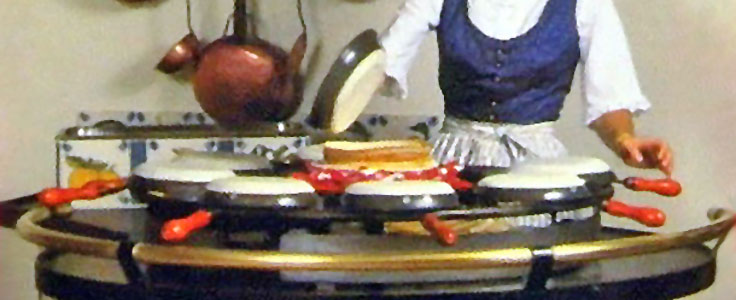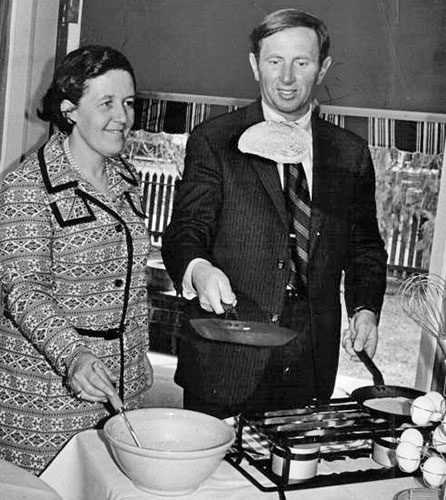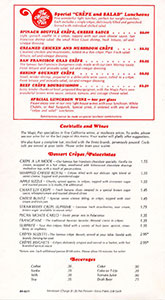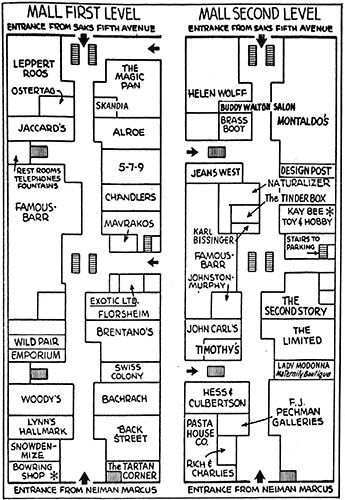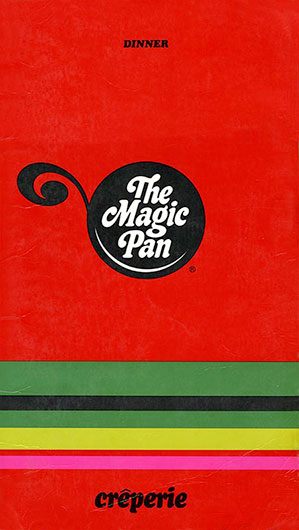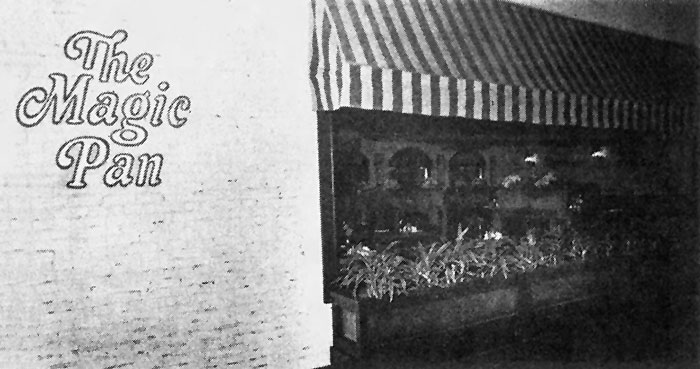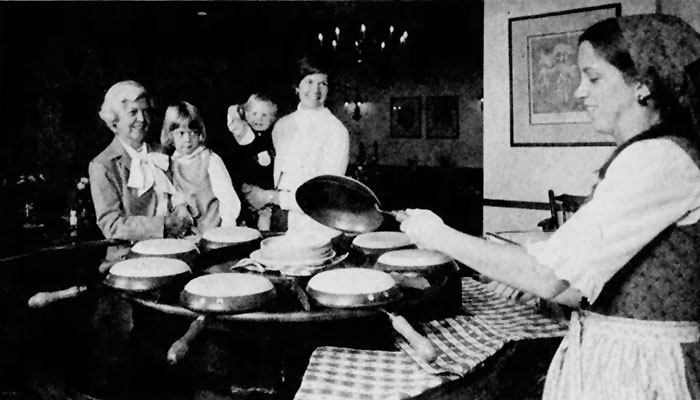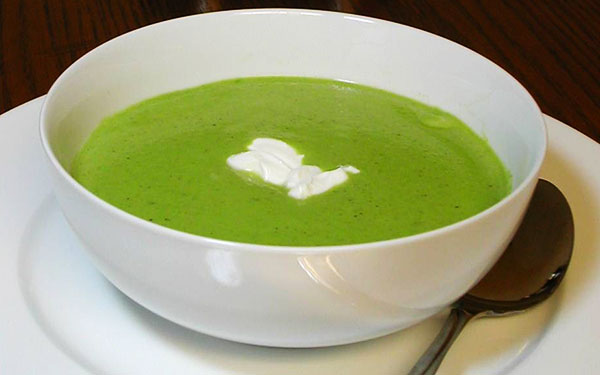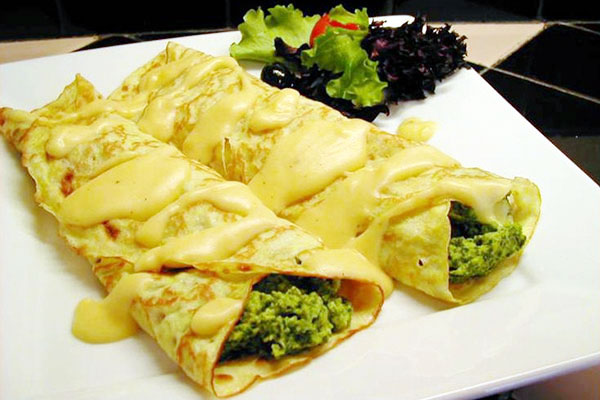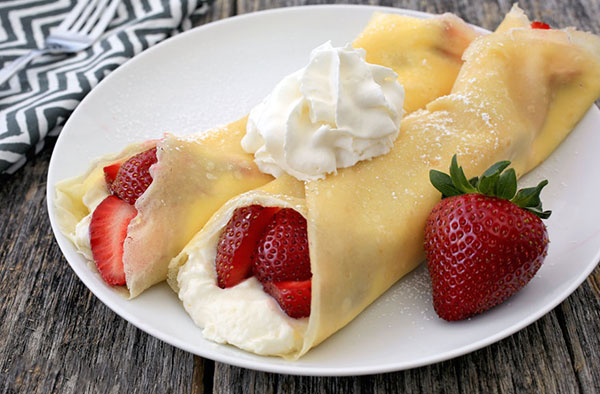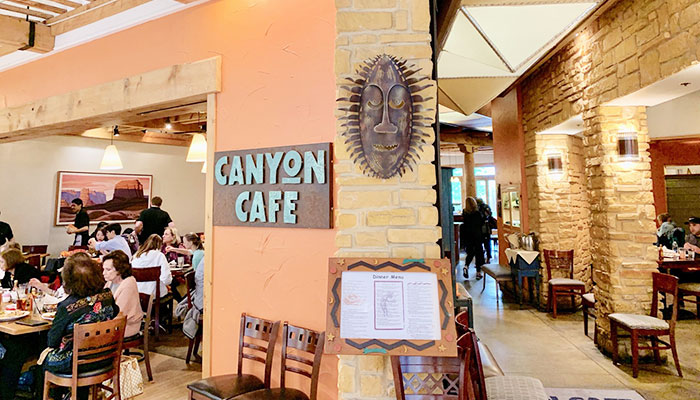|
The Magic Pan Leslie and Paulette Fono came to the United States from Budapest in 1956, settling in Denver. When they entertained, Paulette would make palacsintas, the Hungarian equivalent of crepes, using many of her mother's recipes. "It was our friends who became enthusiastic about the filled pancakes and who encouraged us to open a restaurant and serve some of our specialties," Leslie recalled. In 1966, the Fonos moved to San Francisco and opened a small restaurant at 3221 Fillmore, near Lombard Street. It seated 24 people and was decorated "just like home in Hungary." Paulette made the fillings and Leslie made the crepes. And to make crepes efficiently, Leslie came up with an invention which gave the restaurant its name – The Magic Pan. The device was a large iron wheel which held eight crepe pans. The pans rotated over gas flames, which heated them from below. When the pans were hot, they were greased on the bottom, dipped into crepe batter and placed upside down on the wheel. After a pan made a complete circuit, the crepe was lifted carefully from its bottom and placed atop a stack in the middle of the table.
Crepes were made in full view of diners by a "chef" in a dirndl outfit. One
perfectly cooked crepe
could be made every minute.
A short article in the April 16, 1966 San Francisco Examiner gave the new creperie a favorable review.
The original Magic Pan menu offered crab crepes, spinach crepes, mushroom crepes, cheese crepes and lobster crepes. The starter was a goulash soup and salad. Desert was strawberry crepes with chocolate sauce.
The Fonos' creperie was so successful that a year
later a second Magic Pan opened at Ghirardelli Square, the onetime
chocolate factory turned complex of shops and restaurants. And then
in
January of 1969 it was announced that the Fonos had sold their
restaurants to the Quaker Oats Company, which planned to expand the
concept throughout the country. Leslie and Paulette Fono became
president and vice president of Magic Pan, Inc.
* * * * * In January of 1972, the Frontenac Board of Alderman voted to rezone a 68-acre tract of land at the southwest corner of Clayton and Lindbergh, paving the way for the development of a 30-acre "high-fashion" shopping center. The center would consist of two "anchor" stores connected by a two-level mall with small specialty shops.
Plaza Frontenac
opened in the fall of 1973 with Saks Fifth Avenue's ribbon cutting
ceremony on November 3. Saks was located at the north end of the
mall, at #1 Plaza Frontenac. On November 25, 1974, The Magic Pan
opened next door at #2. The St. Louis Magic Pan was an instant success. In the February 5, 1975 St. Louis Post-Dispatch food critic Joe Pollack gave the creperie a rave review.
There were many favorite dishes on the the
Magic Pan menu. One was the
Potage St. Germain, or French country
pea soup. It was served with a dollop of sour cream and a splash of
sherry. The sherry was served on the side in a tiny glass pitcher,
while the sour cream was placed in the bowl and dusted with chopped
parsley.
The Magic Pan also gained a following for their salads, including their Orange Almond Salad, which was first developed by their food service director for her own use at home, then adapted for use at the creperies. Joe Pollack liked the Magic Pan's Fresh Spinach Salad.
The Magic Pan offered a number of entree crepes, including meat, chicken, fish and vegetable varieties. Joe Pollack catalogued them in his review, along with their 1975 prices.
On October 31, 1978, a second St. Louis Magic Pan opened at Northwest Plaza. and about a year later, a third opened at Crestwood Plaza. The Crestwood Plaza Magic Pan experimented with an expanded menu, adding such items as London broil, hamburgers and other sandwiches, quiches and French fries to its list of crepes. * * * * * The Magic Pan helped pioneer the sit-down restaurant in the shopping mall, adding a more formal option to snacks and food courts. As the mall industry grew, so did The Magic Pan – to over 100 units in the 1970s. But in the 1980s and early 1990s, the Magic Pan faced competition from a host of other sit-down contenders, plus their average check couldn't keep up with escalating mall rents.
By the end of 1992, the last St. Louis Magic
Pan closed at Plaza Frontenac. The space sat empty until 1995, when
Canyon Cafe opened for business.
Copyright © 2020
LostTables.com |

